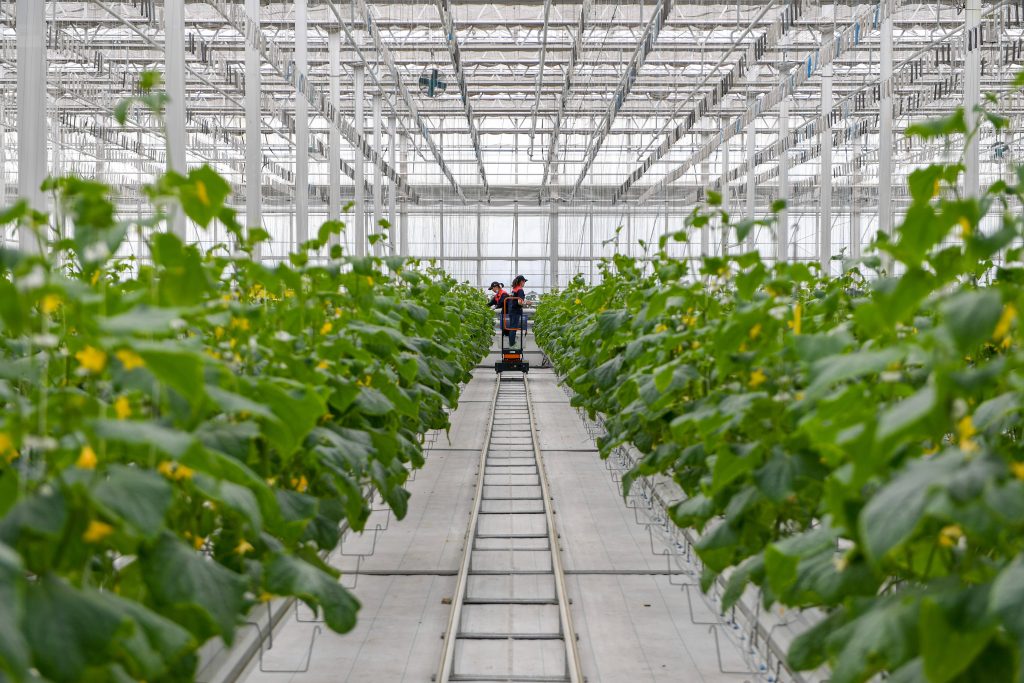It can be expected that the new generation of information technology represented by AI will have a profound impact on the development of smart agriculture, and empowering agriculture with artificial intelligence has become a major proposition. Mechanised agriculture has liberated grain production in the field from manual labor. In the future, agricultural informatization will make farmers more respectable professions.
What changes will arise when the cutting-edge technology meets the oldest industry? Recently, the first agricultural AI dialogue robot in China was released, and questions such as “What to do if potatoes have rotten roots”, “How is the market for watermelon in a certain place”, and “Help me find a bayberry purchaser” will be answered. It can be expected that the new generation of information technology represented by AI will have a profound impact on agricultural development, and seizing the new wind of intelligent agriculture as artificial intelligence has become a major proposition.
The application of agricultural AI is accelerating. At the beginning of this century, it had already emerged in China, with intelligent robots for farming, planting, and harvesting, as well as intelligent systems for disease and pest detection and soil moisture prediction. In recent years, sensors, drones, and agricultural robots with independent intellectual property rights have become increasingly mature and appear in more and more agricultural scenarios. In 2020, the Ministry of Agriculture and Rural Affairs and the Central Network Information Office issued the “Digital Agriculture and Rural Development Plan (2019-2025)”, proposing to accelerate the research and application of agricultural artificial intelligence. Since the release of ChatGPT, the cognitive big model technology has continued to evolve, and similar products have been continuously launched in China. In this context, the launch of large-scale model products in the agricultural field is naturally not surprising.
The agricultural application of artificial intelligence is very extensive, involving perception, decision-making, control, operation, etc., and agricultural AI dialogue robots are just one of them. The characteristic of traditional agriculture is to rely on the weather for food, while China’s smart agriculture originated from IoT devices and their corresponding agricultural information systems. By monitoring and improving the growth environment, agricultural production is more stable and controllable. Nowadays, with the addition of a new generation of information technology, agricultural data elements will continue to play a role. For example, with the help of pig face recognition, combined with acoustic features and infrared temperature measurement, it is possible to timely determine whether pigs are sick from their body temperature, calls, etc., thereby warning of the epidemic and scientific breeding.
Smart agriculture is the use of technology to arm agriculture and drive various production factors such as capital, manpower, and land. Many countries prioritize smart agriculture as their development direction, and global smart agriculture presents two major characteristics. One is highly integrated. All kinds of equipment and technology are highly integrated, and the Internet of Things, Big data, artificial intelligence, cloud computing, etc. are combined to form an intelligent production system. The Netherlands, with a land area of only over 40000 square kilometers, integrates smart agriculture into facility agriculture and can produce 54.4 tons of vegetables per hectare, 2.4 times that of China. The second is data integration. Not only applied in the production field, but also to connect the production, processing, circulation, and sales links, establish a large agricultural database, and achieve efficient integration of production and sales. Some countries have established an agricultural outlook system based on this, which directly affects the trend of futures markets and possesses a strategic weapon to dominate the world agricultural product market.
Empowering agriculture with artificial intelligence is a good thing, but it is also urgent. Small farmers in large countries are the basic national conditions and agricultural conditions of our country. No matter how advanced the technology is, both farmers and agricultural enterprises face the problem of whether it is usable, affordable, and cost-effective. On the one hand, they pursue increasing production, improving quality, and saving costs, requiring the introduction of intelligent equipment; On the other hand, they have a stable mindset, are sensitive to short-term costs and benefits, and are hesitant to apply new technologies. It can be seen that the implementation of new technologies is not achieved overnight. It is necessary to continuously iterate and optimize to break through the breakeven point. We should start from reality, actively explore application scenarios, create solutions with rich content, diverse modes, and diverse carriers, reduce user costs, and strive for practical results.
Mechanised agriculture has liberated grain production in the field from manual labor. In the future, agricultural informatization will make farmers more respectable professions. To promote the development of smart agriculture, the government should focus on the construction of public digital resources in agriculture and guide the industrial application of digital technology through policies. Research institutes should combine engineering technology with agricultural production, and research and develop more grounded products. Various types of capital need to patiently support business entities with long-term investment. Farmers and agricultural enterprises need to seize the new round of information technology opportunities, improve quality, strengthen brands, and achieve value-added.


No reply content